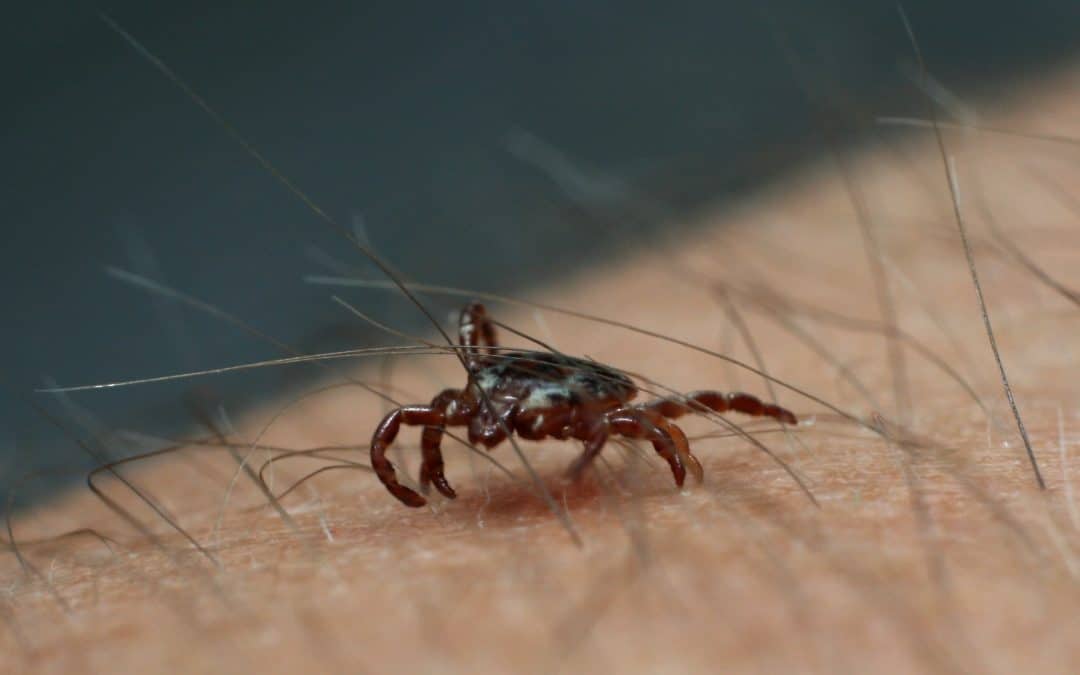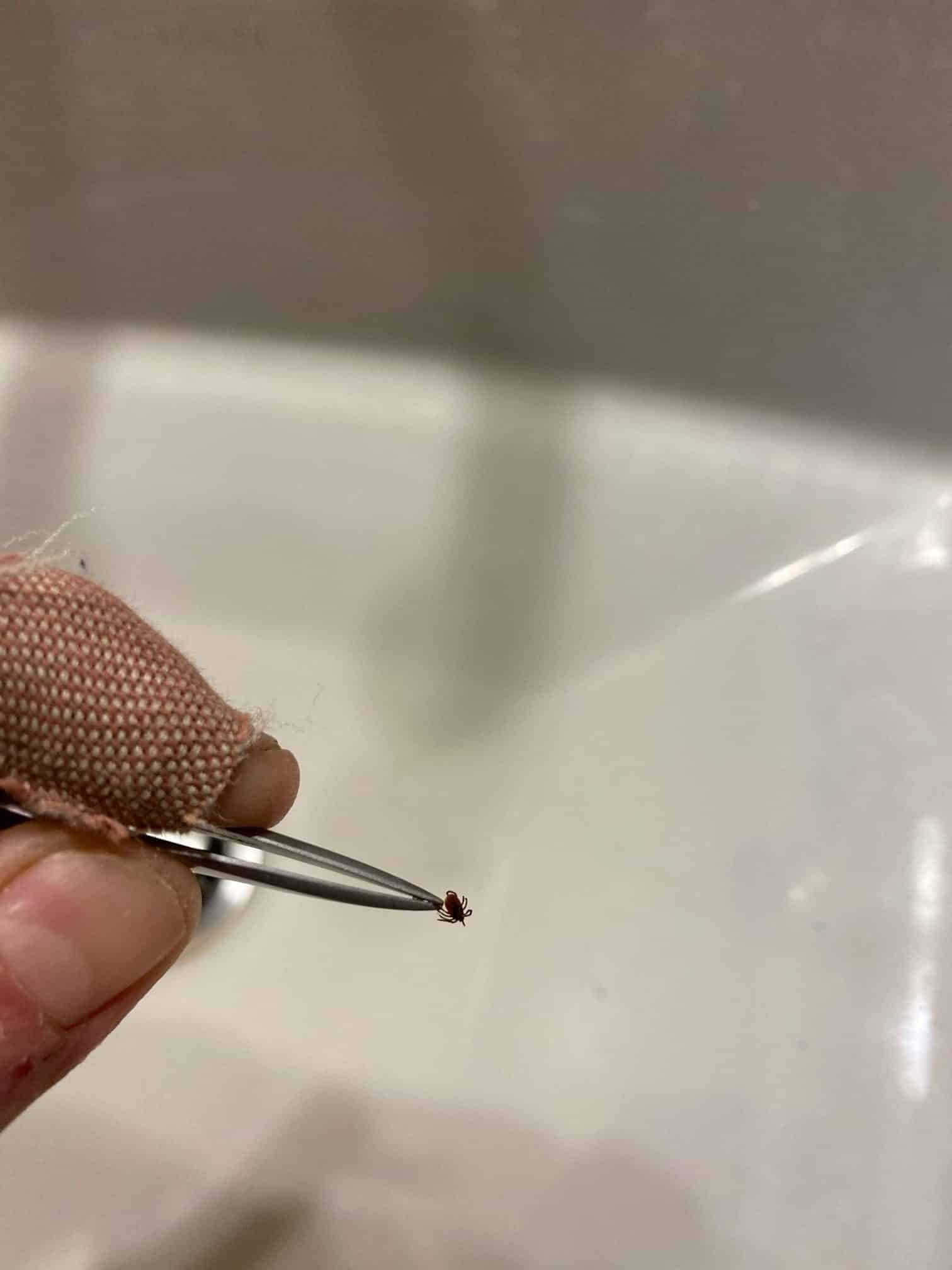Ticks are common across the Boundary Waters region. Photo by Andy Langager from Flickr.
Tick Season Kicks Off Near the Boundary Waters After Warm Winter

By Joe Friedrichs
The ticks are out.
From Ely to the start of the Gunflint Trail, ticks are out in full force in mid-April, more than two full weeks before the start of the quota season in the Boundary Waters Canoe Area Wilderness.
In Minnesota, there are about a dozen different types of ticks, according to the state’s department of health. Not all of them spread disease. Three types that people may come across in Minnesota are the blacklegged tick (deer tick), the American dog tick (wood tick), and the lone star tick.
Deer ticks cause by far the most tickborne disease in the Boundary Waters. Ticks are loathsome critters. In addition to general creepiness, they are often infected with the bacteria that cause Lyme disease. Reports of ticks started to reach the P&P news desk in early April. By April 13, we’d received more than a dozen reports of ticks near the Superior Hiking Trail, the Arrowhead Trail, the Lutsen area, and the Gunflint Trail. We heard secondhand reports of ticks latching onto dogs and humans near Ely as well. Nearly all the reports described ticks as being completely reprehensible creatures. One associate referred to ticks as “evil little bastards.” Another noted that ticks were only the beginning. “We still have black flies and mosquitoes to look forward to,” they declared. Indeed. It’s not all walleye and sunsets across the Boundary Waters. Not at all, Bub.
A mild winter with only traces of snow from December to late March is likely the result of the tick boom this spring across the Boundary Waters region. Ticks live in grassy, brushy, or wooded areas, which are common across the BWCA. Spending time outside walking your dog, camping, gardening, or trekking to a remote fishing spot could bring you in close contact with ticks.
Mark Zimmer, known as the “Barefoot Paddler,” in the BWCA paddling community, spends every spring, summer, and fall in the Boundary Waters. He’s done this for nearly a decade. Zimmer contracted Lyme disease in 2022; he viewed the illness as more a setback to his adventure than a serious threat to his health. But the situation did cramp his style. Deep in the wilderness at the time, Zimmer had to portage and paddle for miles and then drive to Grand Marais to visit a health care clinic. At Sawtooth Mountain Clinic he was given oral antibiotics and directions from the medical provider that included getting plenty of rest. Zimmer went back to the BWCA within twenty-four hours.
Most people don’t have the dedication Zimmer does when it comes to spending time in the Boundary Waters. However, it’s possible (even likely this year) that if you go in the woods near the BWCA or on the Superior Hiking Trail, you’re going to have a tick find its way to your flesh. The Centers for Disease Control and Prevention recommends treating your clothes and gear with products containing 0.5% permethrin. Permethrin can be used to treat boots, clothing and camping gear. Permethrin remains protective through several washings. Alternatively, you can buy permethrin-treated clothing and gear, the CDC suggests.
Deer tick found near Grand Marais and the Superior Hiking Trail in April 2024. Photo by A Elizabeth Ward
If you find a tick attached to your skin, simply remove the tick as soon as possible. There are several tick removal devices on the market, but a plain set of fine-tipped tweezers works very well, the CDC reports.
Jon Oliver is an assistant professor with the University of Minnesota School of Public Health. His areas of expertise include vector-borne diseases, ticks, mosquitoes, and Lyme disease. To help manage and combat Lyme disease, Oliver suggests individuals conduct daily tick checks at this time of year when ticks are aplenty from Ely to Grand Marais. Oliver explained that Lyme disease symptoms could occur quickly. Ticks start to transmit diseases within about 24 hours of biting a human being, he said.
Lyme disease causes more than 300,000 illnesses each year, though it is considered treatable with antibiotics, such as the ones Zimmer took when he ventured to Grand Marais after contracting the disease in 2022. However, Lyme can cause serious, long-lasting, and debilitating symptoms, according to a report from Boston University. Michael Dietze, an ecologist at Boston University, says that people who adventure in places like the Boundary Waters should prepare for the fact that ticks are quickly expanding their numbers and range.
“Warmer weather lets [ticks] increase reproductive capacity, and in general warming allows most insects to grow faster and expand northward,” Dietze said in 2020. Disease-carrying ticks, according to Dietze, thrive in warm, wet, forested environments like the BWCA. And as ecological patterns get altered by human activities—such as increasingly frequent wildfires—the abundance and spread of ticks will change along with them, according to the BU report.
And while ticks have a reputation for being evil, they can provide some value. Ticks benefit the ecosystems in which they live by serving as a food source for many birds and amphibians across the BWCA. Ticks are a favorite food source for ground birds like grouse, which are abundant across the Boundary Waters region. Ticks are also a strong and important link in the food chain, according to a report from the National Institutes of Health. Ticks take nourishment from larger host animals high in the food chain and transfer that down to lesser organisms, according to the report.
There’s plenty to celebrate about the upcoming paddling season. Despite the value ticks might provide to the overall ecosystem of Minnesota, ticks aren’t likely to have anyone celebrating the end of winter anytime soon.
The ticks are here. And there’s still black flies and mosquitoes to look forward to.
Support Paddle and Portage and news from the Boundary Waters by becoming a member here.
Other Recent Articles
Congress Talks Wolves and Mining As Quota Season Starts in the BWCA
Photo by Eva Blue on UnsplashNewsToo many wolves and not enough mining near the Boundary Waters Canoe Area Wilderness. These were two themes brought to the forefront of Congress this week at the urging of U.S. Rep. Pete Stauber, who represents all of northeastern...
Young Cancer Survivor Talks About the Importance of Wilderness
Julia Ruelle (stern) paddles in the BWCA during her "parent-free trip" the wilderness. Submitted photoNote: Julia was the winner of Ely Outfitting Company’s first annual Boundary Waters Teen Essay Contest in 2018. She was 16 years old and a sophomore at Minnetonka...
Minnesota Governor and Media React to Last Entry Point
(From left) Cathy Wurzer, Joe Friedrichs and Eric Eskola on the Almanac set. Photo by Kari KennedyI was in an elevator with Cathy Wurzer. So, naturally, we started to talk about death. It’s a topic we’re both intrigued by. Death. Dying. The end. I just wrote a book...







